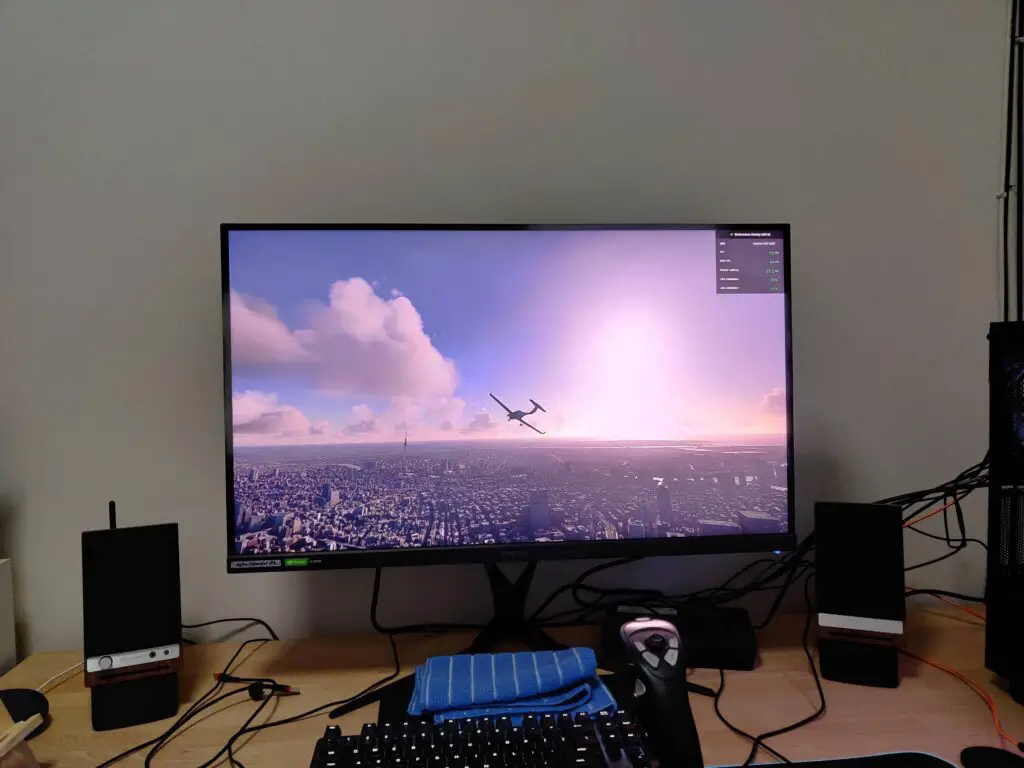Gamers will often debate whether to purchase a G-sync monitor or a non-G-sync 144Hz monitor. So, would you rather have G-sync or a monitor running at a fixed 144Hz refresh rate?
This article will compare G-sync vs. 144Hz and determine which one is better.
144Hz vs. G-sync Compared
G-sync
G-sync is a technology that improves the responsiveness and smoothness of the images on your monitor.
G-sync should provide you with a variable refresh rate for tear-free gameplay if you have a compatible graphics card.
With G-sync enabled on your monitor, the refresh rate will change dynamically to match your GPU’s frame rate. As a result, your display will not have any screen tearing.
G-sync also replaces the regular scaler in a monitor to lower input lag. It stores the previous frame in a 768MB DDR3 memory and compares it to the next incoming frame.
If G-Sync is active, your monitor will become a slave to your PC. So, if your frame rate slows down or speeds up, your display panel will render each frame as instructed by your PC.
Simply put, G-sync does not allow overlap between your monitor’s refresh rate and the frames sent from the GPU.
Pros
- Eliminates screen tearing
- Reduces input lag
- Stable frame rates
Cons
- G-Sync monitors are expensive
144Hz
A non-G-sync 144Hz monitor will still get the job done, but not as better as a G-sync monitor. With a 144Hz monitor, you should expect smooth gameplay and low input lag.
While gamers love 144Hz monitors, they have to deal with screen tearing at some point. You might argue that screen tearing is not visible on 144Hz monitors, but it does happen.
If your monitor’s refresh rate is not in sync with the frame rate sent from the GPU, you’ll experience screen tearing.
Your screen will have a constant 144Hz refresh rate, but the GPU will output varying framerates during a game session.
If you use a 144Hz monitor without G-sync, you’ll run into minor problems trying to play low FPS games. The games might feel a bit sluggish, and you might get a little screen tearing.
These problems are the reason G-sync exists. G-sync will constantly adjust the refresh rate to match your framerate.
Pros
- Great for FPS games
- High refresh rates
- Cheaper than G-sync monitors
- Fast response times
Cons
- Screen tearing when playing low FPS games
Is G-sync worth It At 144Hz?
Yes, g-sync makes a considerable difference irrespective of the refresh rate. While gaming on a 144Hz monitor will provide you with an immersive experience.
G-sync ensures you enjoy all games by reducing stutter, lag, and screen tearing.
Is G-Sync Noticeable?
G-Sync is noticeable at lower framerates. As long as you have G-sync enabled, you’ll never experience screen tearing or stutter. It smoothens everything out to give you an overall better gaming experience.

Is G-sync Better Than 144Hz?
Not necessarily, but G-sync makes all the variable framerates that fall between 30fps and 144Hz pleasant and smooth.
Final Thoughts
144Hz monitors will always provide excellent motion clarity due to the high refresh rate. On the other hand, G-sync makes gaming smooth and enjoyable by eliminating screen tearing and stutter.
